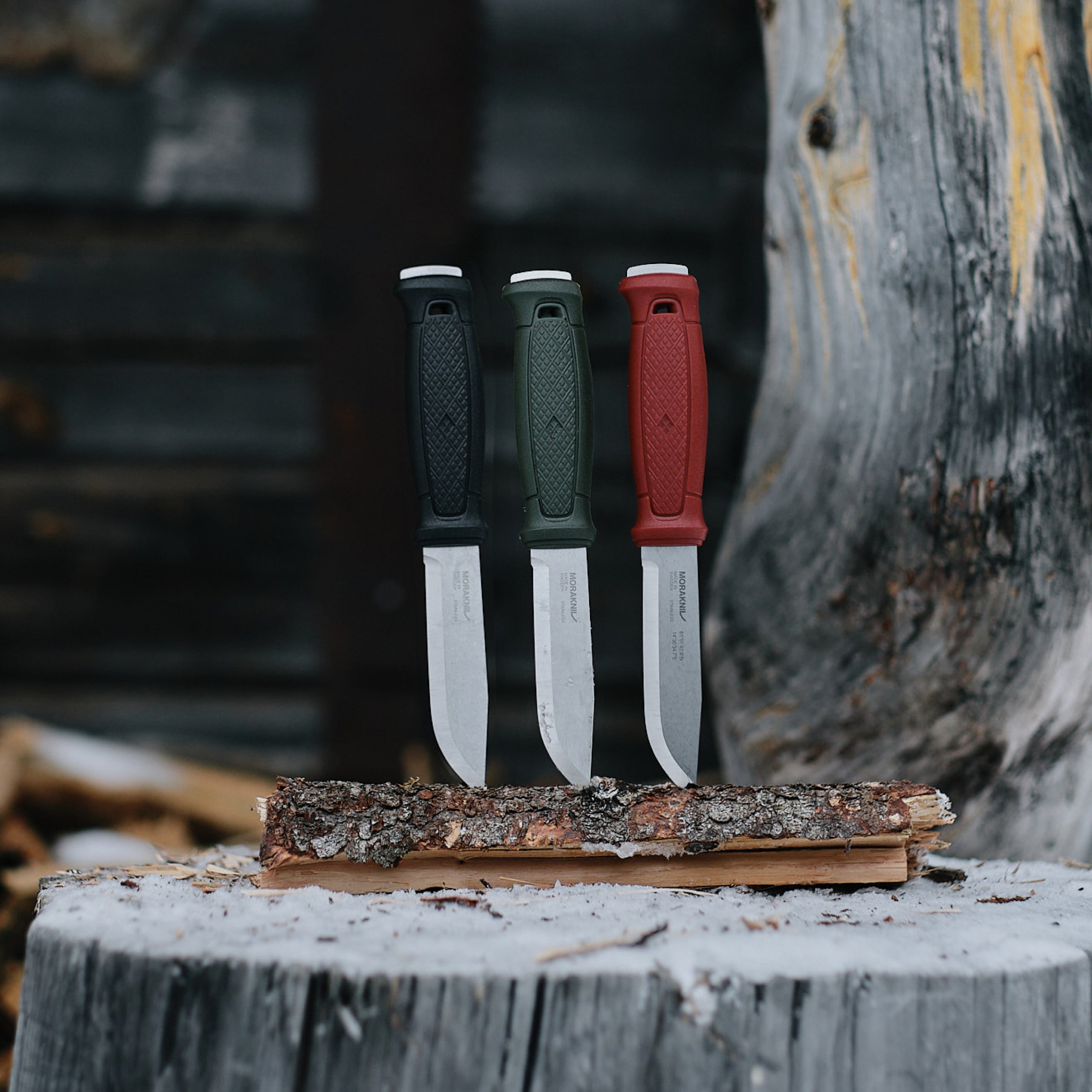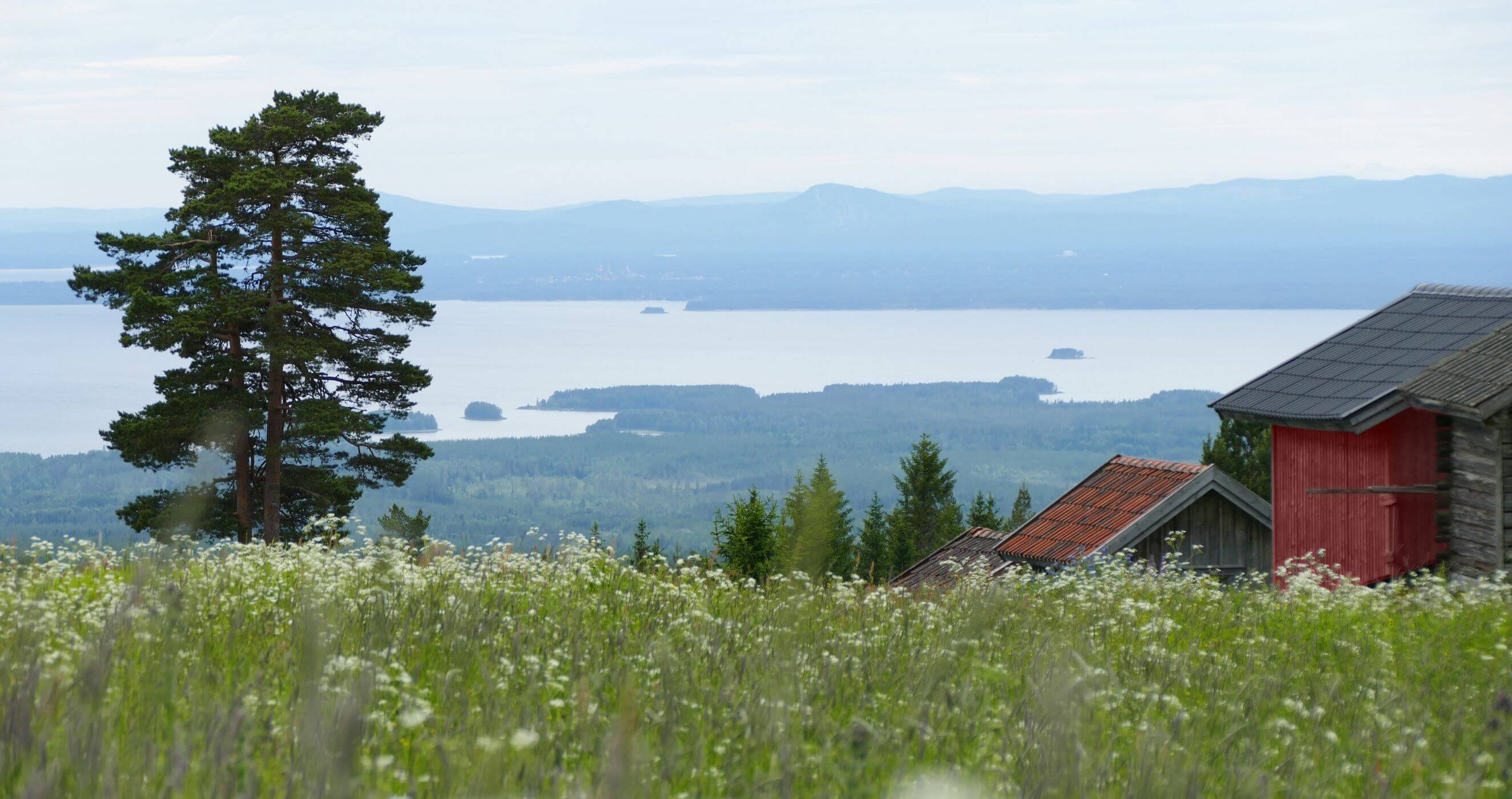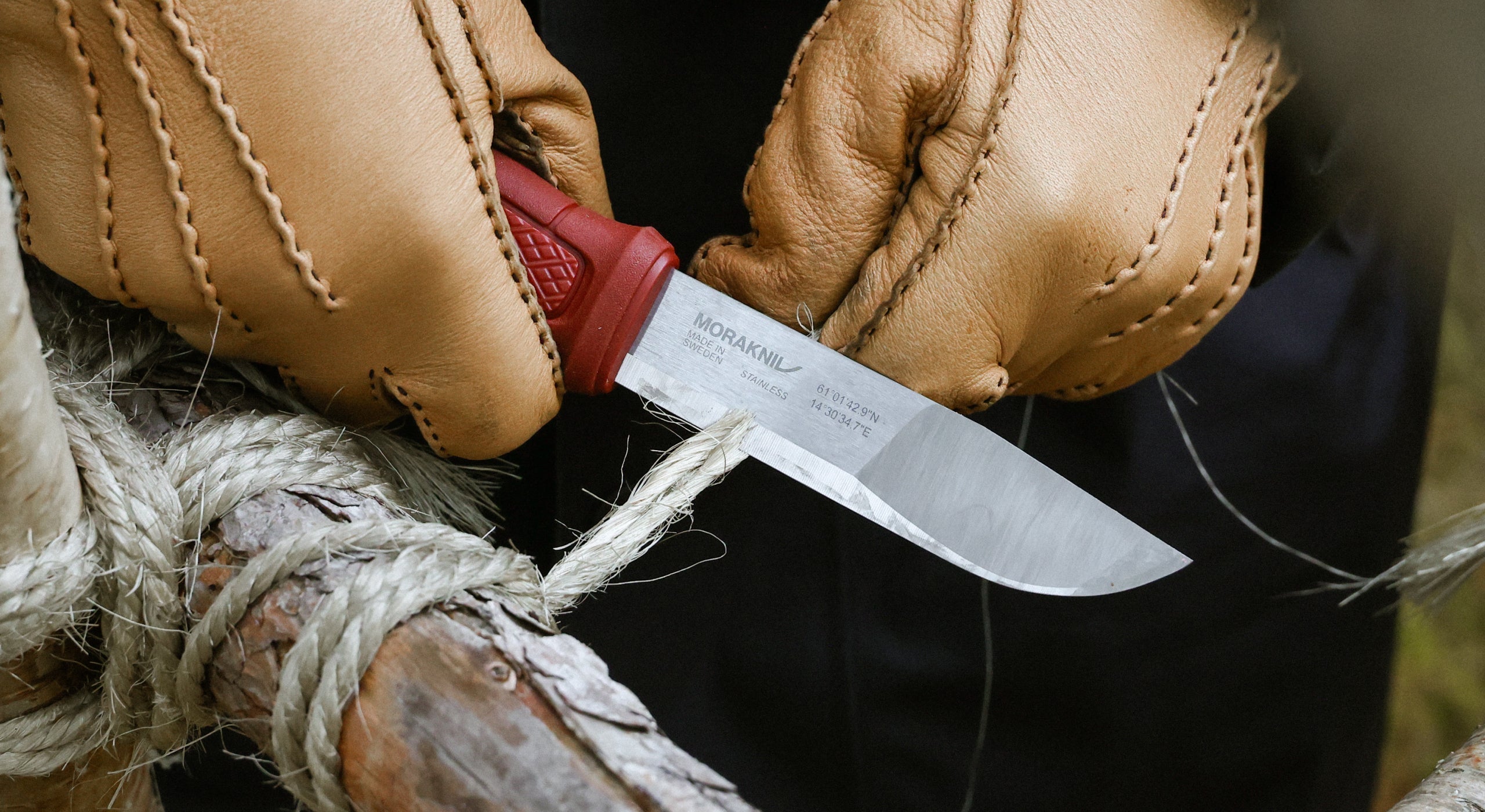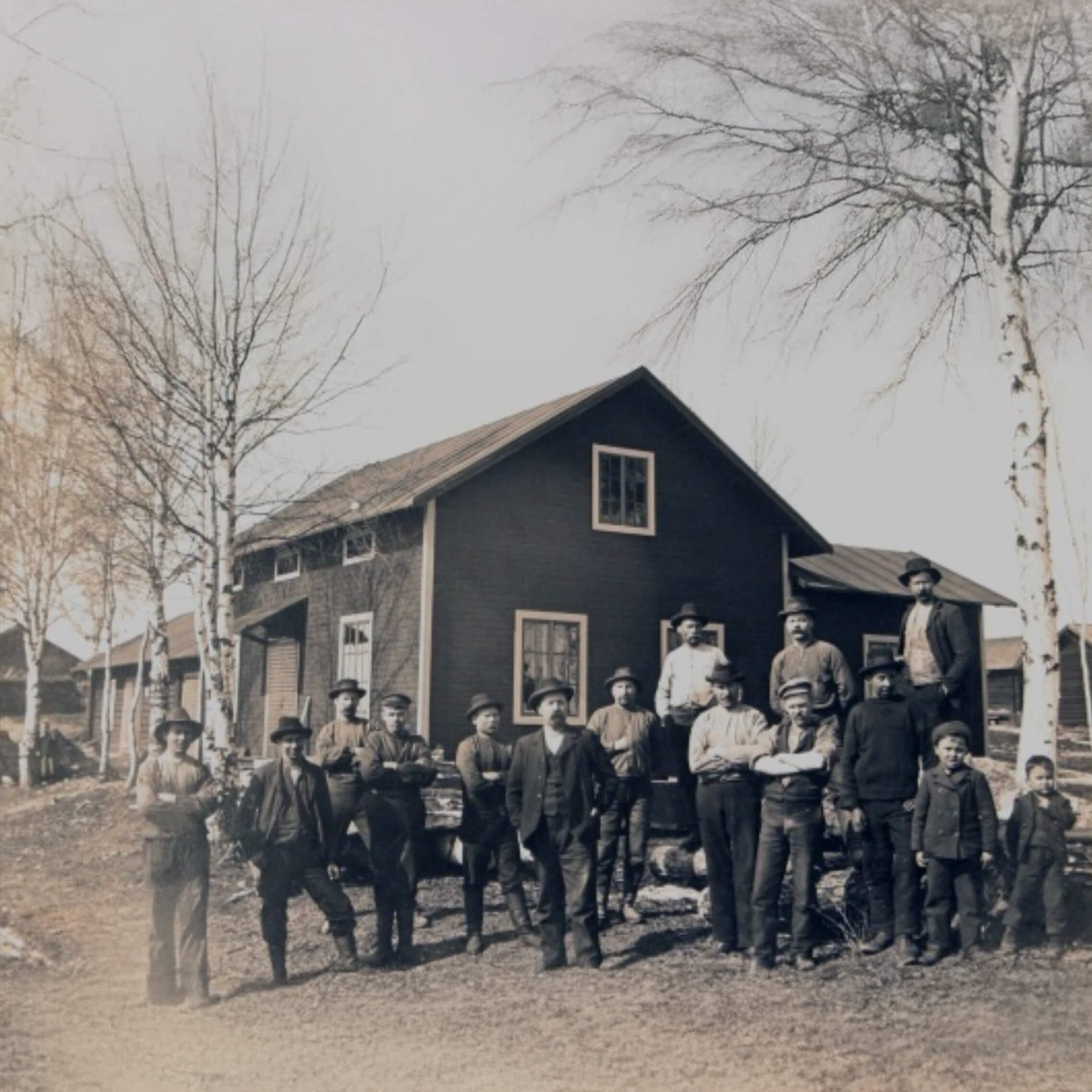
Knivmakare sedan 1891
Morakniv är ett familjeägt företag, grundat 1891, som idag drivs av en styrelse med extern VD. En Morakniv är alltid tillverkad i Mora. I vår fabrik i Östnor förenas 135 års hantverkstradition med modern produktion för att skapa knivar som används världen över.Läs mer om hur våra knivar tillverkas.
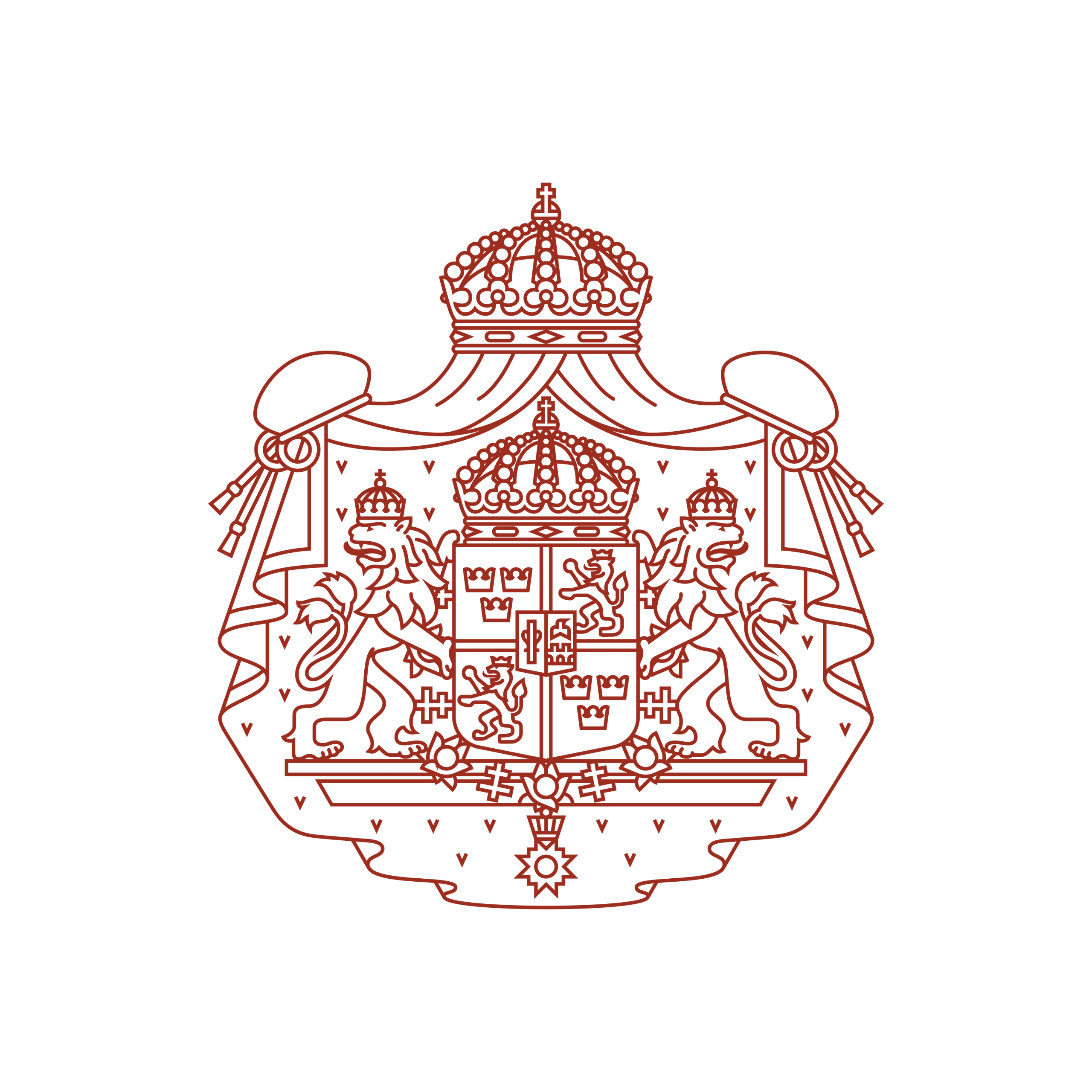
Kunglig Hovleverantör
Morakniv är Kunglig Hovleverantör till H.M. Konungen. Utmärkelsen delas av omkring 130 företag i Sverige och tilldelas när produkterna uppskattas för sin höga kvalitet. Som hovleverantör blir Morakniv en del av ett urval som också speglar skandinavisk design och svenskt hantverk i världsklass.Morakniv historia
1891 – Moraknivs resa börjar i Östnor
Frost-Erik Erson återvänder från Nordamerika och grundar en åkdonsfabrik i Östnor. Här tillverkas kälkar, trillor och knivar som till en början används internt i verkstaden. Knivtillverkningen tar fart och knivarna blir en eftertraktad bytesvara som sprids i Sverige av gårdfarihandlare.1904 – Morakniv sprids i världen
Vid sekelskiftet är Morakniv ett välkänt begrepp bland hantverkare och slöjdare och sprids i landet av återförsäljaren Böhlmark & Co. Knivarna exporteras till grossister, krut- och järnhandlare i Europa. Med tio anställda 1904 producerar Frosts nu 19 000 knivar per år.1912 – KJ Eriksson startar fabrik
Krång-Johan Eriksson, eller KJ, lämnar Frosts efter en dispyt med arbetsledningen. Tillsammans med Lok-Anders Mattsson startar han Eriksson & Mattssons Knivfabrik i Östnor, vilket långt senare kommer bli en del av Morakniv. 1918 lämnar Lok-Anders verksamheten och Krång-Johan driver fabriken vidare under namnet KJ Erikssons Knivfabrik.1920-talet – Ikoner och innovationer
”Sweden” stämplas i stålet som en kvalitetsgaranti, och det röda skaftet blir ett kännetecken för knivarna från Mora. 1927 börjar KJ Erikssons Knivfabrik tillverka en ny skidbindning, konstruerad och patenterad av Vasaloppsvinnaren Anders Ström, son till Rombo-Anders Andersson-Ström. KJ Eriksson köper patentet och bindningen blir en viktig inkomstkälla under depressionens hårda år.1930-talet – Hela världens kniv
KJ Eriksson lanserar sportkniven, barnens första kniv som sedan slutet av 1900-talet är mer känd som scoutkniven. Den blir snabbt populär i Sverige och Norge och har sedan dess varit en trogen följeslagare på små och stora äventyr. Samtidigt introduceras Mora-saxen, och 1938 beskriver Mora Tidning hur Östnor tillverkar en miljon knivar årligen – Morakniv är nu känt världen över.1940-tal – De svåra krigsåren
Under andra världskriget begränsas materialtillgången kraftigt och exporten till Norge stoppades. Trots motgångarna fortsätter produktionen, med scoutkniven som en viktig produkt. 1947 brinner Frosts Knivfabrik ner till grunden, men byggs snart upp igen.1950-tal – Plastens genombrott och isborren
Efter flytten 1948 till Bjäkenbacken i Mora, samma plats där Morakniv än idag har sin fabrik , passerar produktionen två miljoner knivar per år. I slutet av1950-talet slår plasten igenom och ersätter gummi och trä i många modeller. Färgglada scoutknivar och köksknivar blir populära inslag i sortimentet. 1955 föddes också isborren ”Mora-Borren”.1960-talet – Förvärv och internationalisering
KJ Erikssons Knivfabrik köper upp Bud-Carls verkstad och satsar på moderna maskiner som effektiviserar produktionen. Samtidigt växer exporten och Morakniv stärker sin position i Skandinavien, med Frosts och KJ Eriksson som de två drivande fabrikerna.1970-talet – Från trä till plast
Plast ersätter i allt större grad trä- och läderskaft, vilket gör knivarna billigare och enklare att tillverka. 1975 lanseras jaktkniven Jägaren och 1976 modellen 510, som snabbt blir en av Moraknivs mest sålda knivar.1980-talet – Expansion och export
1980 slås KJ Erikssons Knivfabrik och AB Moraindustri ihop till KJ Eriksson AB. Under årtiondet växer företaget kraftigt med nya ergonomiska modeller för livsmedelsindustrin, inte minst för export till USA. 1988 köper KJ Eriksson AB även in sig i Frosts Knivfabrik.1990-talet – Fem miljoner knivar om året
1991 lanseras Mora 2000, en mångsidig friluftskniv som snabbt blir en favorit bland jägare, friluftsfolk och militärer. Samtidigt automatiseras produktionen allt mer, och de två fabrikerna når en årstakt på upp till fem miljoner knivar. Sortimentet breddas med yrkesknivar, jaktknivar och specialknivar för olika användningsområden.2000-talet – Mora of Sweden
2005 slutförs sammanslagningen när Frosts blir ett helägt dotterbolag till KJ Eriksson AB, och företaget byter namn till Mora of Sweden. År 2009 registreras Morakniv som officiellt varumärke – en milstolpe som markerar början på den moderna eran.2010-tal – Morakniv AB tar form
Det slutgiltiga steget i sammanslagningen tas när all produktion samlas på Bjäkenbacken, i de lokaler där KJ Eriksson en gång startade. Här finns än idag Moraknivs fabrik och tillverkning, och sedan 2016 bär företaget namnet Morakniv AB.